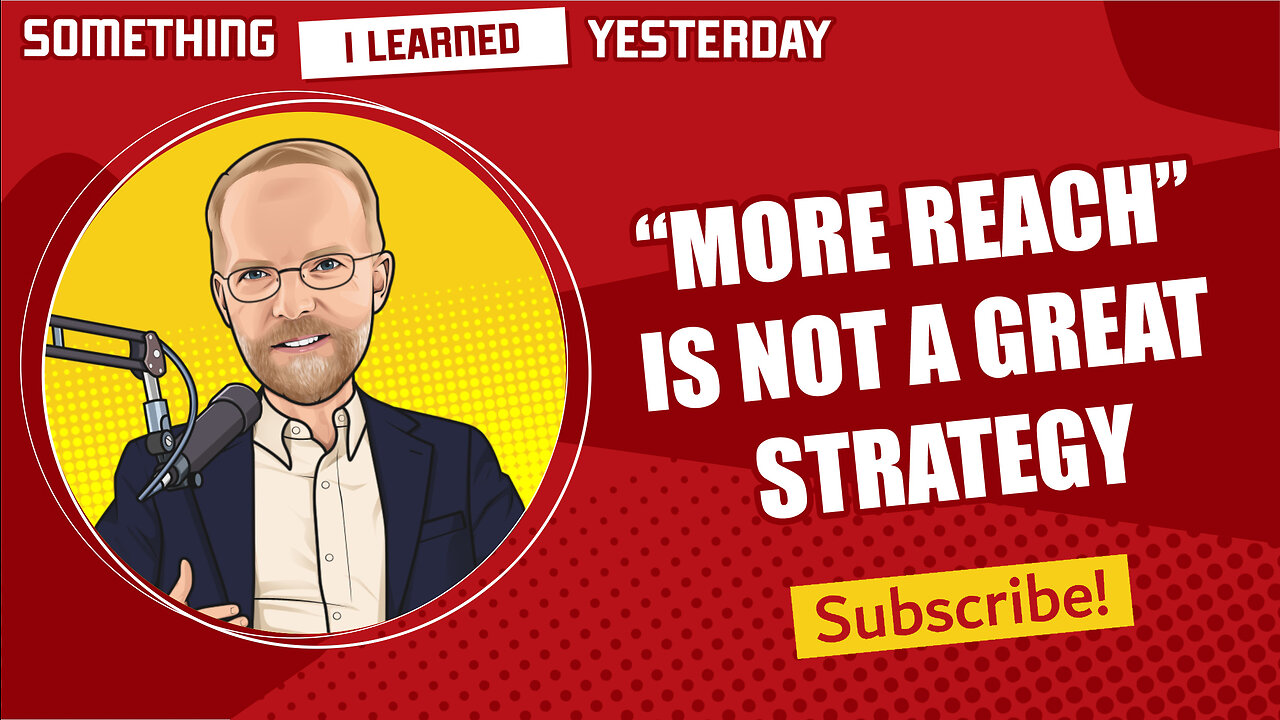Premium Only Content

"Reach" has been a dangerous distraction for publishers
Expanding your market is not always a good idea
Fortune’s Chief Customer Officer, Selma Stern, is cited over at whatsnewinpublishing.com as saying “the media industry is far too focused on reach and forgot about sales. As a result, supervisors set the wrong incentives, leading to many new customers being acquired with dumping prices.”
Misaligned incentives are certainly a big problem. In my experience, many magazine companies incentivize ad sales in a way that undermines subscription sales, which is pretty dumb.
Selma also mentions the very low prices we’ve seen for magazines, which is a somewhat self-defeating way to increase reach.
Here’s how that works. Let’s say you have a magazine about video cameras. To get advertisers to buy pages, they want to know how many people get your magazine. But they also want to know that the people who read the magazine are (1) interested in video cameras, and (2) willing to spend some money in that market.
If you have 50,000 people who are willing to spend $30 a year to get your magazine, that’s a market that will interest advertisers.
Now we get a new marketing director who’s obsessed with reach. Why should we settle for 50,000? Why not 100,000? And to get there, we’ll make ridiculous new subscriber offers, like $5 for one year.
We’ve diluted our pool of subscribers. Before we had people who were willing to spend $30 a year. Now we have people who are willing to spend $5. That group is less valuable to the advertiser. And the more tricks the marketing department pulls to get new people in the door – for example, buy this very popular magazine and get our video camera magazine for just $1 – the more you dilute your subscriber base.
I have very mild interest in video cameras, but I might spend a dollar to get a magazine about them.
There are good things about reach. For one thing, you can get more information about more people, and information is key. I don’t mean that in a sneaky, creepy sort of way, but more information about behavior, preferences, trends, and such, can help with new product development, finding new niches, cross-sales, etc.
But there’s a bad side to reach. A focus on reach can diminish quality. For example, if I’m writing to an audience that really cares about video cameras, the authors can geek out with very detailed, in-the-weeds stuff. But if I’m writing for people who are only mildly interested in video cameras, the stories have to be a lot fluffier, which will frustrate the real enthusiasts – that is, your previous core market.
The same thing is true on a website. If your goal is to attract more eyeballs, you’re going to tend towards lower quality, more sensationalism, and a short-term focus. You’re not going to invest in serious journalism. You’re going to move towards homogenized, generic content.
The future of publishing, I hope, and half-way believe, is in serious, quality content for niche audiences. “Reach” has been a distraction.
-
 LIVE
LIVE
LFA TV
20 hours agoLFA TV ALL DAY STREAM - WEDNESDAY 7/9/25
1,326 watching -
 1:40:48
1:40:48
vivafrei
7 hours agoRusia-Gate Resurfaces! Epstein Debacled Continues! Live with Rev. Rim Christopher & Benny Johnson
168K60 -
 2:10:46
2:10:46
Pop Culture Crisis
3 hours ago'SUPERMAN' Box Office TROUBLE? 'Harry Potter' Actor Calls You Racist, Sydney Sweeney MID? | Ep. 873
18.1K3 -
 DVR
DVR
LadyDesireeMusic
2 hours ago $1.07 earnedMake Ladies Great Again | Piano Music
15.4K3 -
 LIVE
LIVE
The Rabble Wrangler
1 hour agoThe Rabble Wrangler Returns! Call of Duty Warzone with The Best in the West
37 watching -
 LIVE
LIVE
sophiesnazz
2 hours ago $0.32 earnedPLAYING RANKED l TOP 25000 !socials
22 watching -
 1:09:47
1:09:47
The HotSeat
2 hours agoBiden’s Doc Pleads the FIFTH?! Epstein Lies, Jail Cell Doubts & the Death of TRUTH in America
15.6K14 -

Film Threat
4 hours agoJAMES GUNN'S SUPERMAN REVIEW | Hollywood on the Rocks
11.7K2 -
 1:21:52
1:21:52
Russell Brand
5 hours agoFighting the Devil and Winning – Bas Rutten on Faith, Demons, and Discipline - SF611
179K24 -
 10:00
10:00
MattMorseTV
23 hours ago $4.17 earnedTrump isn't TAKING the BAIT.
30K37